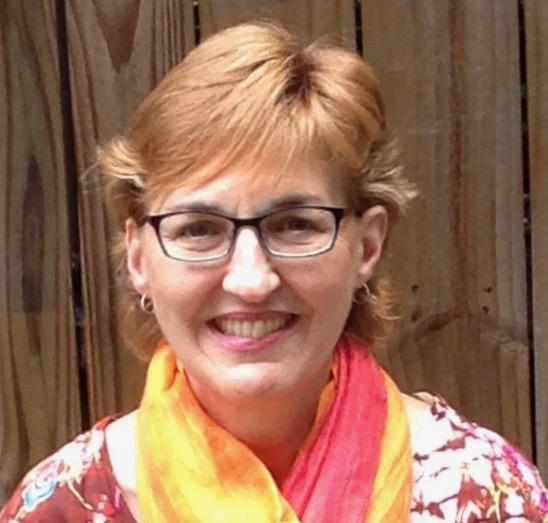Contact Us
Student Spotlight
Margaret Johnson is currently enrolled in the MA TESOL program, to which she transferred after completing her TESOL certificate requirements last summer. She is in her fifth semester of study at AU.
Margaret Johnson MA TESOL
Did you have any teaching experience before you enrolled in the TESOL program?
I have been volunteering as a reading and writing tutor/teacher pretty much since I finished college. I went to New York City after graduation because I thought I wanted to be a journalist and after a brief stint at a public television station I went to work in finance at an investment bank. Our office was in the McGraw Hill building, and, as a major publishing house, McGraw Hill supported literacy outreach programs so I began teaching after work with Literacy Volunteers of New York City in the basement of my building, and also at the English Speaking Union. Several years later I relocated to DC and began tutoring public school children through Reading Partners and volunteering at Washington English Center.
When did you first become interested in TESOL?
Over the years many of the students I have worked with were struggling with reading and writing because English was not their first language. I realized they had a specific set of challenges and needs, which I wanted to learn more about.
How does your previous career help you to teach ESL?
I spent the bulk of my professional career in finance, which has a vocabulary all its own, so I am very aware of the need to learn, in the case of finance, the pertinent jargon and acronyms, and in the case of ESL, idiomatic chunks, which so enhance one’s ability to function in a given environment.
Are you currently teaching English? If yes, where and what is your learner population?
I teach at Washington English Center in DC. I have mainly taught at the advanced level although this term I am teaching at the advanced beginner/intermediate level. The learner population I serve is adult and quite varied in terms of L1 background with students from Argentina, Brazil, Chile, China, Colombia, El Salvador, Morocco, Thailand, Serbia and Vietnam.
In your opinion what makes a successful language learner and teacher?
A successful language learner tries to use the target language as much as possible and tries to make connections and take notice of aspects of the language, inside or outside the classroom. For example, I had a student last week draw attention to a statement she had heard which was “I have lived here for four months” and ask about the homonyms “for” and “four” which helped raise metalinguistic awareness for her and her classmates and helped them remember the “for [period of time]” expression. A successful teacher creates an environment where students are comfortable using the language and taking risks. Many of our students spend much of their time using a language other than English so making the classroom a place where they feel comfortable and supported so that they will jump in and practice is critical to their progress.
What do you plan to do after you complete the TESOL program?
I am not sure exactly what I will do. I am really enjoying working with an adult population again. I love teaching but I have also thought about curriculum design. I have wondered if I should combine my financial background and TESOL training to create programming around financial literacy and English literacy, for which I think there is a need.
What interests do you pursue outside of the classroom?
I am married, with three children, two of whom are at home, and I love hiking with my family and our dog. Rock Creek Park, the Capital Crescent Trail, and the Little Falls Trail are some of my favorite places for a ramble in the woods. I also like to work with my hands. I came of age in a time before “maker spaces” but in an era when girls learned to sew in school and I still like to sew and knit. I also love to read.

